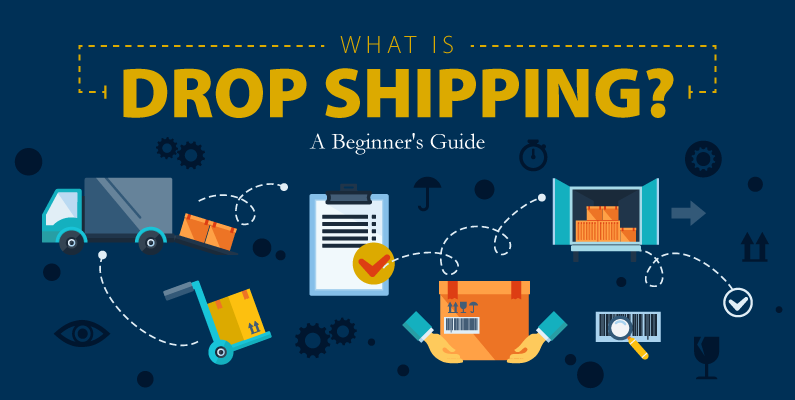How to Create a Successful Online Drop Shipping Business in 6 Easy Steps
A great thing’s beginning always begins modestly. You must first embrace a mindset that embodies learning, entrepreneurship, and positive growth in order to start your dropshipping business.
Failure and anxiety are inevitable, but they also present a chance for personal development. Like the majority of successful business people, you’ll need to develop the ability to fail quickly and utilize setbacks as a springboard for greater judgment. Be upbeat, aggressive, and brave in your quest to build the best online business for your specialty.
The six stages listed below might help you launch a company that can compete with global retail giants while operating on a tight budget. Even while starting a drop shipping firm doesn’t require a lot of capital, it will be extremely labor-intensive.
- Pick a specialty.
Your chosen specialization must be intensely narrow and align with your own interests. Unfocused product lines will be challenging to market. It takes a lot of work to build a drop shipping business, so you’ll be more likely to get disappointed if you aren’t passionate about the niche you choose. When choosing your niche, keep the following things in mind:
- Look for lucrative earnings. The emphasis of a drop shipping business model is on marketing and customer acquisition, therefore selling a $20 item requires almost the same amount of work as selling a $1,500 item. Pick a market with more expensive products.
- Affordable shipping is crucial. Even though your manufacturer or supplier will take care of the delivery, if the price is too high, it can deter customers. Find something that is reasonably priced to ship so that you may offer free delivery to your consumers and defray the cost as a company expense to increase sales.
- Ensure that your product appeals to budget-conscious impulse purchasers. Because the majority of website visitors won’t come back, you want to have the highest conversion rate possible when you are working to increase traffic. The goods you are offering should entice people to buy them on the spur of the moment and appeal to those with the means to do so.
- Verify that people are looking for your product. When researching some popular search terms for your potential niche, use Google’s Keyword Planner and Trends tools. You are out of luck before you even start if no one is looking for what you intend to sell.
- Establish a unique brand. If you can rebrand whatever it is you are offering and present it as your own, your drop shipping business will be more valuable. Look for a product or line that you can white label, brand, and sell under your own name.
- Market a product that isn’t easily accessible nearby. Choose a product that your customer can’t get on the street. You increase your appeal to potential clients in this way.
- Research the competition.
Keep in mind that you will be up against other drop-shipping businesses and retail behemoths like Walmart and Amazon.
A product may not have a lot of competition for a variety of reasons, such as expensive shipping, problematic suppliers and manufacturers, or slim profit margins. Look for products with competition because this indicates a strong demand and a long-lasting business model.
- Locate a vendor.
It’s critical that you take your time with this stage because choosing the wrong provider to partner with can completely destroy your company. Apply the appropriate due diligence. Since the majority of drop shipping suppliers are located abroad, communication is crucial for quick responses and mutual understanding. Move on and continue your search if you are not completely confident in a possible supplier’s communication skills.
- Create your online store.
Using a straightforward e-commerce platform will enable you to construct a website that supports a drop shipping business model the quickest. It includes a ton of apps to boost sales and is easy to use even if you have no IT knowledge.
Use one of the plug-and-play solutions, especially in the beginning, even if you have a significant budget that would allow you to engage a web design and development business to construct a custom solution. You can consider more website personalization once you’re established and making money.
- Develop a strategy for customer acquisition.
While having a great product and a website is fantastic, a business cannot exist without interested clients. There are several ways to draw potential clients, but starting a Facebook ad campaign is the best choice.
This enables you to start making sales and money straight away, which can help with rapid expansion. You can put your offer in front of a highly targeted audience on Facebook. As a result, you can immediately compete with the biggest brands and shops.
Search engine optimization and email marketing should also be priorities because you must also consider the long term. Gather email addresses right away, then create automated email campaigns with deals and discounts. It’s a simple approach to increase revenue without spending more on advertising or marketing by utilizing your current consumer base.
- Examine and improve.
To expand your firm, you must monitor all the data and KPIs accessible. If Facebook is your primary route for attracting customers, this also includes data from the Facebook conversion pixel and Google Analytics traffic. You can scale what works and get rid of what doesn’t when you can track every conversion, knowing where the consumer came from and what path they took on your website that ultimately resulted in a sale.
Conclusion
There will never be a marketing or advertising solution that you can just set and forget. To determine whether to optimize or change the campaign budget, you must continuously explore fresh opportunities and tweak running campaigns.






